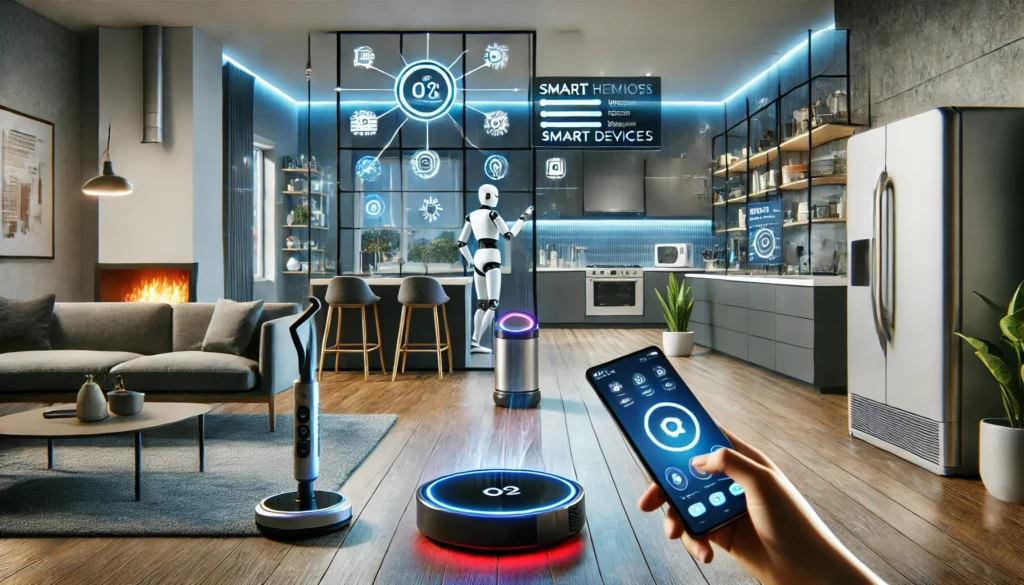The Internet of Things (IoT) is a game-changing technology that connects devices, systems, and services to create a smarter, more efficient world. Today, IoT is transforming smart living by enhancing convenience, improving energy efficiency, and offering unprecedented control over daily life. This article explores how IoT redefines modern living while addressing key benefits, applications, and challenges.

Outline
- Introduction
- What is IoT?
- The role of IoT in smart living
- Importance of discussing IoT’s impact
- How IoT is Transforming Smart Living
- Improved home automation
- Enhanced energy efficiency
- Better security systems
- Applications of IoT in Daily Life
- Smart home devices
- IoT in healthcare
- Connected transportation
- Benefits of IoT in Smart Living
- Increased convenience
- Cost savings
- Personalization
- Challenges of IoT in Smart Living
- Privacy concerns
- Security vulnerabilities
- Device interoperability
- Future Trends in IoT and Smart Living
- Expansion of IoT ecosystems
- Integration with AI and ML
- Sustainability and green technology
- Conclusion
- Summary of IoT’s impact on smart living
- Encouragement to embrace IoT for a smarter future
Introduction
The concept of smart living has gained momentum in recent years. At its core is the Internet of Things (IoT), a technological framework that connects devices and systems via the internet. IoT is transforming smart living by making homes, cities, and workplaces more interconnected and intelligent.
Understanding the role of IoT in smart living is crucial for appreciating its benefits. From controlling appliances remotely to automating repetitive tasks, IoT simplifies life. Additionally, it enhances energy efficiency and bolsters security, ensuring that modern living becomes more sustainable and convenient.
How IoT is Transforming Smart Living
IoT is revolutionizing smart living in multiple ways, bringing innovation to homes and urban environments. Let’s delve into the key areas where IoT is making a difference.
Improved Home Automation
Smart devices like voice-activated assistants, connected lighting systems, and smart thermostats are prime examples of IoT’s impact. They allow users to control their homes effortlessly, providing a seamless experience tailored to individual preferences.
Enhanced Energy Efficiency
Energy management is a vital aspect of IoT in smart living. Devices like smart meters and automated appliances monitor and optimize energy usage. By doing so, they help reduce energy waste and lower utility bills.
Better Security Systems
IoT-powered security systems, including smart cameras, motion detectors, and doorbell cameras, provide unparalleled safety. These devices enable real-time monitoring, instant alerts, and remote access, giving homeowners peace of mind.
Applications of IoT in Daily Life
The versatility of IoT makes it applicable in various aspects of daily life. Here are some prominent examples.
Smart Home Devices
From smart refrigerators to automated vacuum cleaners, IoT-powered devices are reshaping home living. These innovations not only save time but also offer enhanced convenience.
IoT in Healthcare
Wearable devices and remote health monitoring systems demonstrate IoT’s transformative potential in healthcare. These solutions provide real-time data to doctors and enable better health management.
Connected Transportation
IoT plays a significant role in modern transportation. Smart vehicles equipped with IoT systems enhance road safety, improve traffic management, and enable predictive maintenance.
Benefits of IoT in Smart Living
The advantages of IoT go beyond mere convenience. Here are some key benefits:
Increased Convenience
IoT simplifies daily tasks, from scheduling chores to setting reminders. For instance, you can start your coffee maker or adjust your thermostat using a smartphone.
Cost Savings
Energy-efficient devices and optimized resource usage translate to significant cost savings. Smart systems detect inefficiencies and recommend adjustments to minimize expenses.
Personalization
IoT devices adapt to user behavior over time, offering tailored experiences. Smart lighting systems, for example, adjust brightness based on user preferences and time of day.
Challenges of IoT in Smart Living
Despite its numerous advantages, IoT adoption comes with challenges that must be addressed.
Privacy Concerns
IoT devices collect vast amounts of data, raising concerns about user privacy. Ensuring secure data storage and usage is critical for building trust in IoT ecosystems.
Security Vulnerabilities
Connected devices are vulnerable to cyberattacks. Protecting IoT systems requires robust security protocols to prevent unauthorized access.
Device Interoperability
With numerous IoT devices on the market, ensuring compatibility can be challenging. Standardized protocols and frameworks are necessary to create seamless interactions between devices.
Future Trends in IoT and Smart Living
The future of IoT promises even greater advancements in smart living. Here are some emerging trends to watch:
Expansion of IoT Ecosystems
IoT ecosystems are expected to grow, encompassing more devices and services. This expansion will lead to a fully interconnected environment where devices communicate effortlessly.
Integration with AI and ML
Artificial Intelligence (AI) and Machine Learning (ML) will enhance IoT’s capabilities. Predictive analytics and automated decision-making will make IoT systems smarter and more efficient.
Sustainability and Green Technology
IoT will play a pivotal role in promoting sustainability. Smart grids, energy-efficient devices, and waste management systems will contribute to a greener future.
Conclusion
IoT is transforming smart living by integrating technology into every facet of life. From automating homes to enhancing energy efficiency, its impact is profound. Although challenges like privacy and security remain, the benefits of IoT far outweigh the drawbacks. As IoT continues to evolve, embracing its potential will pave the way for a smarter, more connected world.
By understanding how IoT is revolutionizing smart living, individuals can make informed choices about adopting this transformative technology. With its promising future, IoT is set to redefine how we live, work, and interact with our surroundings.
READ MORE :
- https://rmm.abyadi.com/iot-trends-shaping-connected-world/
- https://rmm.abyadi.com/iot-enhances-industrial-efficiency-in-smart-factories/
- https://rmm.abyadi.com/iot-smart-farming-for-a-sustainable/